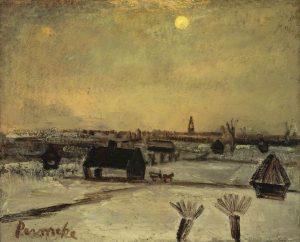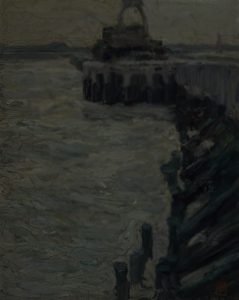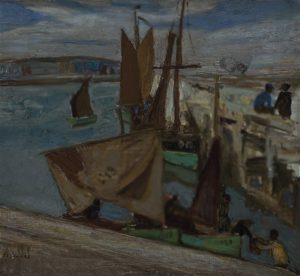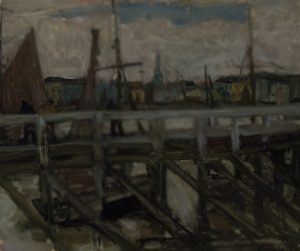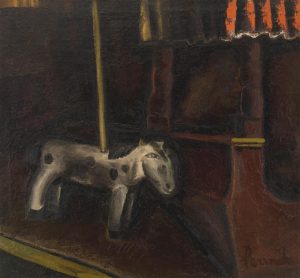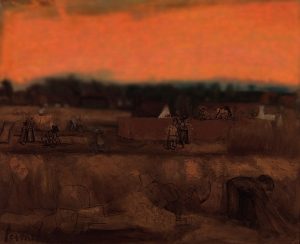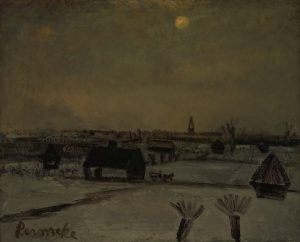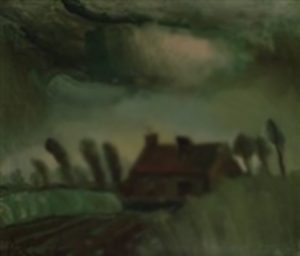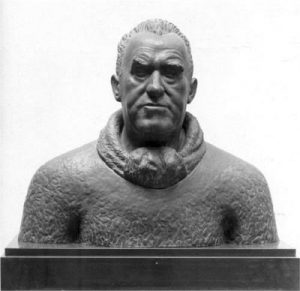Constant Permeke was born on the 31th of July in 1886 in Antwerp, Belgium.
1886 - 1952
Constant Permeke
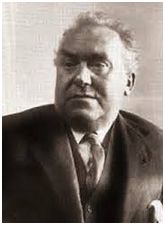
description
A Belgian artist and sculptor, one of the leaders of the school of Flemish Expressionism.
He was born into the family of a landscape painter Henri Permeke. Constant received his first form of education from his father.
Constance Permeke was one of the founders of an innovative wave in the colony of artists in Sint-Martens-Latem near Ghent and headed the Antwerp Academy of Arts after the end of World War II. The artist enjoyed great fame and popularity during his lifetime. He organized several solo exhibitions, including in Paris and Brussels, and also participated in the Venice Biennale in 1934, which made him famous throughout the world. The most recognizable work of the author is the sculpture “Niobe”, copies of which adorn the channels of Bruges and are a symbol of the city. Streets in several cities of Belgium, including Brussels, Antwerp and Ostend, are named after Constant Permeke. In the Belgian village of Jabbeke, a regional museum of the artist was opened.
Key ideas :
– Constant Permeke’s creativity is characterized by the tragedy of the worldview, the emotional intensity of the artistic vision, the sense of the domination of the elemental forces of nature over man. His works are performed in a wide, free manner; they are characterized by the unrestrained expression of painting in contrast to monumental, as if frozen figures and a calm, almost monochrome color scale.
– Permeke’s paintings of the first period depict mainly the North Sea with its endless expanses and harsh people engaged in dangerous and hard work. The artist creates story compositions with simple fishermen, depicts their families at work on the shore or during the rest. Figures are deliberately rough and monumental. Behind distorted silhouettes and flat, almost geometric forms, a great vitality and energy are hidden.
– After moving to the village of Yabbeke, located far from the sea, the artist switched to the images of peasants, whom he depicted with the same strength and emotion. In addition to scenes from the life of fishermen and villagers, Permeke painted many landscapes.
– Most of the images of nature are made in ocher and black and white tones; the silhouettes in them are blurred, as if dissolving in the surrounding space. In the seascapes, the natural element is depicted in a majestic, calm, sometimes somewhat disturbing manner, which makes one think about the helplessness and insignificance of a man in comparison with its power.
Approximately from 1937, the artist began to create sculptures, mostly female nude figures. As a sculptor, Permeke tried to depict a human figure in a tense emotional state, expressing its emotional wandering and fighting, he achieved great success in that. In the last period of his life, the artist’s manner somewhat softened, wandered through more graceful forms and subtle colors. This is especially evident in the last cycle “Brittany”.
1886
1903
1906
1914
1921
1930
1934
1941 - 1945
1951
1952
The birth of the artist
Entered the Academy of Fine Arts in Bruges
Entered the Academy of Fine Arts in Bruges.
Was drafted for military service in Ghent
Was drafted for military service in Ghent. After the army, the artist continued his education at the Royal Academy of Fine Arts in Ghent, where he became acquainted with the work of E. Claus, who had a strong influence on his early work. Also during the training, Permeke made friends with G. de Smet and F. van de Berg, who had been his supporters and associates for many years. Together, the artists worked in the colony of Sint-Martens-Latem. Beginning in 1909, Permeke began to paint in a more subdued tone and gradually retired from impressionistic painting.
After the outbreak of the First World War
After the outbreak of the First World War, Permeke was mobilized and sent to the defense of Antwerp. Seriously injured by a shrapnel on the way to Fort Duffel, he was evacuated to England, where he underwent treatment. Having reunited with his family, who also fled to Britain, the artist continued to paint. In Belgium, Permeke returned only in 1918 and settled in Ostend.
Solo exhibitions of the artist were conducted in Brussels and Paris
Solo exhibitions of the artist were conducted in Brussels and Paris and received good reviews and public attention. Living in Ostend, Permeke intensively engaged in arts. He created paintings depicting the sea and the life of fishermen. During this period, the individual style of the author was finally established. The artist continued his communication and creative cooperation with Fritz van den Berg and Gustav de Smet, who repeatedly visited him in Ostend.
Acquired a large house in the village of Yabbeke
Acquired a large house in the village of Yabbeke, where he lived until the end of his life. Far from the seacoast, the artist changed the themes of his painting. Instead of sailors, he depicted peasants, and instead of the sea surface – the fields and valleys of Flanders, while keeping his individual artistic style unchanged. During this period, Permeke created his best works: “Motherhood”, “Owl”, “Sower” and a number of other works.
Participated in the International Venice Biennale
Participated in the International Venice Biennale, after which the world recognition came to the artist. In the late 30’s, Permeke began to try his hand at sculpture. His works “The Sower”, “Three Graces”, “Niobe” and others are recognized as the best examples of the Modernist sculpture of Belgium of the interwar period.
During the Second World War, the artist's work was recognized as "degenerate"
During the Second World War, the artist’s work was recognized as “degenerate” and the occupants imposed a ban on his painting. The son of Permeke was arrested and taken to Germany as a prisoner, while the artist himself was forced to move to Brussels. In 1945, after the end of hostilities, Constant Permeke was appointed the director of the Royal Academy of Arts in Antwerp, but a year later he resigned.
The death of his wife
After the death of his wife, which the artist experienced very hard, he made a long trip to France, where he painted the landscapes of Brittany. After he returned from this trip, Permeke’s health deteriorated strongly, and he became bedridden.
The death of the artist
Constant Permeke passed away on the 4th of January in 1952 in Ostend, Belgium.
Constant Permeke
On Artist
flow
Impressionism
Expressionism
friends
Gustav de Smet
Albert Servas
artists
Vincent van Gogh
Henri Permeke
Emil Klaus
James Ensor
Max Beckman
Otto Dix
Emil Nolde
By Artist
flow
Expressionism
friends
Fritz van de Berg
Gustav de Smet
Maurice de Vlaminck
artists
Luc-Peter Krombe
Maurice Schelcom
Chris Potsom
Leah van der Straten
Joe Van Rossem

